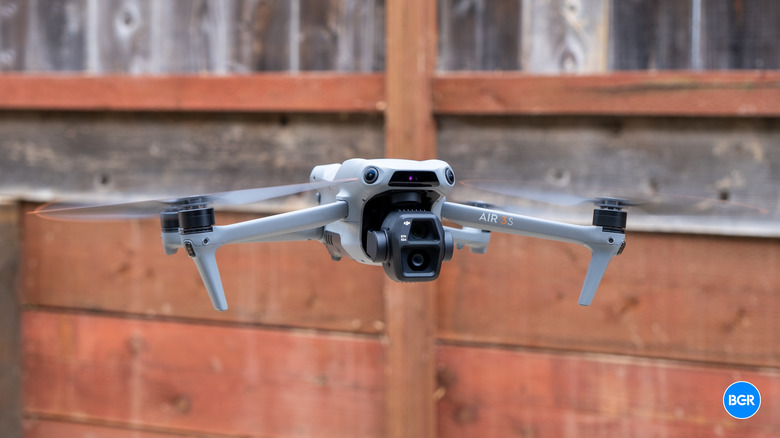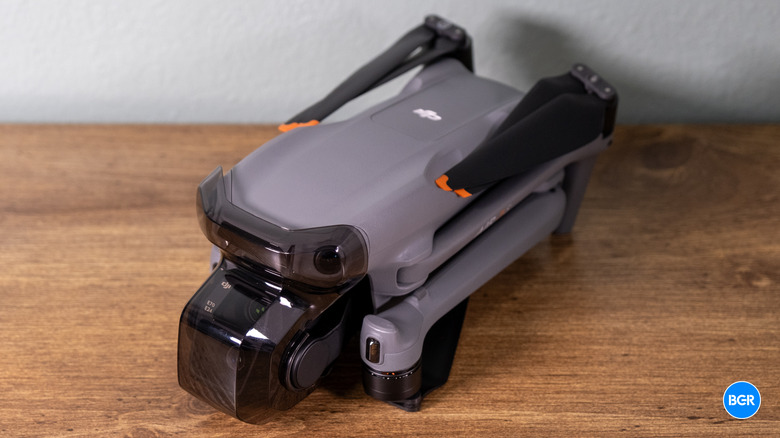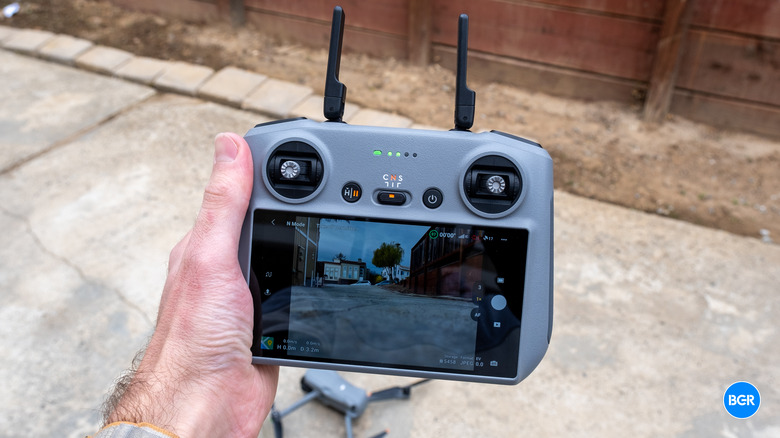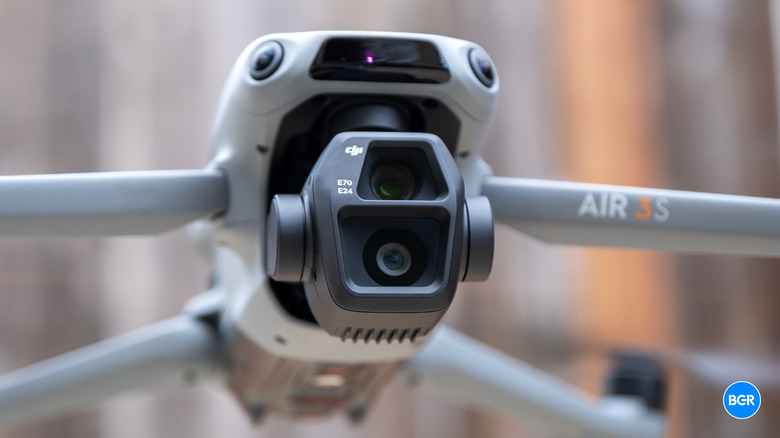DJI Air 3S Review: The Go-To Quadcopter Drone
- Detailed image capture
- Vibrant and smooth video
- Easy to use
- Helpful flight modes
- Advanced obstacle avoidance
- A little pricey
| Buy From | List Price | Sale Price | |
|---|---|---|---|
| DJI | $1549 | $1549 | See It |
We may receive a commission on purchases made from links.
It's a big year for DJI. Earlier this year, the company unveiled its cheapest drone yet with the DJI Neo, a drone that I generally quite liked considering its low price point. Now the company is back with an update to the Air series, which has long been the go-to for those who don't want to spend DJI Mavic-level money but want something a little more advanced than what's on offer by the DJI Mini series. The DJI Air 3S builds on the original DJI Air 3 while offering more internal storage, some camera upgrades, and some extra features.
While the Air series is excellent for those who have some cash to spend, the DJI Mini has been getting better and better over the years, and at this point, it is a professional-level drone in a compact and portable body. Does the Air 3S offer enough in terms of upgrades to buy over the DJI Mini 4 Pro?
DJI Air 3S specs
| Dimensions | 214.19× 100.63× 89.17 mm (folded) |
| Weight | 724g |
| Max speed | 47 mph |
| Max transmission distance | 12.4 miles |
| Camera | Wide: 1-inch CMOS, 50MP, f/1.8 Tele: 1/1.3-inch CMOS, 48MP, 70mm equivalent |
| Video quality | 4K 120fps, 1,080p 240fps |
| Battery life | Approximately 45 minutes |
| Price | Starting at $1,099 |
Iterating on the same sleek design
The DJI Air 3S doesn't necessarily reinvent the wheel when it comes to DJI drone design. In fact, if you've seen a DJI drone before, you might not even be able to tell the difference between the one you saw and the Air 3S.
That's not a bad thing though. DJI has made minor improvements to its design every generation, and the Air 3S is sleek and stylish. It's built from the same grey plastic as other drones, with black highlights in the camera gimbal and propellers. The battery can be removed from the rear of the device, and slightly under the battery compartment can be found a USB-C port and a microSD card slot. The drone has cameras and sensors dotted around its body for different obstacle-avoidance technologies.
The drone folds up nicely into a relatively compact package, and it comes with a nice carry bag that it slots right into. We're reviewing the DJI Air 3S Fly More Combo, which also comes with extra batteries, the DJI RC2 controller, and six additional propellers on top of the four that you'll need to install before flying (propellers are not pre-installed). The case is high quality and relatively protective, though it's not a hard case, so you'll still want to be careful with it. Installing the propellers is very easy — simply push down and twist, and the propellers should be set in place. Make sure you install the right propellers on the correct arms, though.
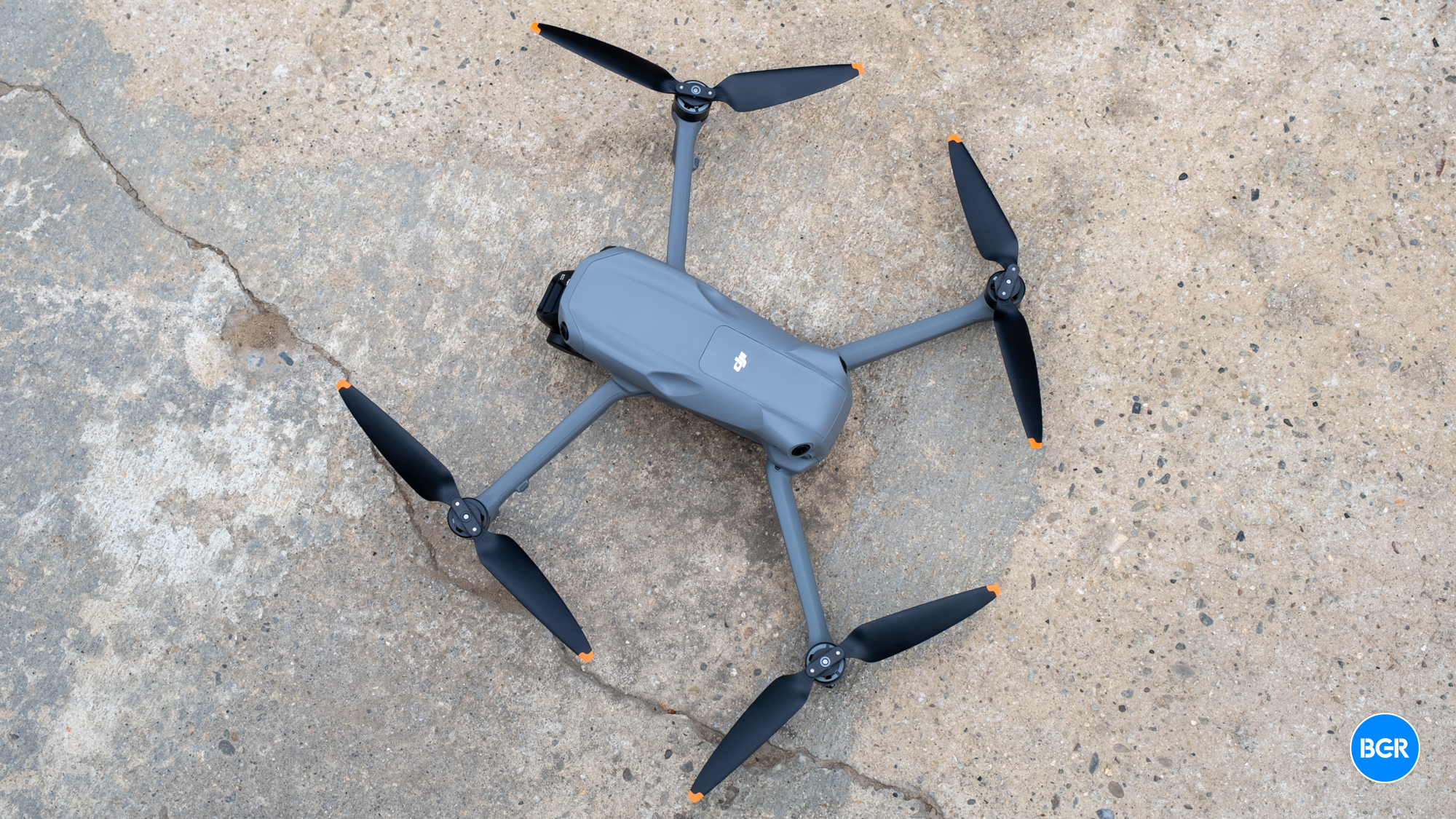
The DJI Air 3S weighs 724 grams with its battery and propellers, which means that it's large enough that you'll need to register it with the FAA in order to use it. The weight limit for FAA registration is 250 grams, which is why most mini-sized drones tend to be 249 grams. That's not the case here, though, so make sure you register your drone before you fly it.
Well-designed and comfortable controller
The base package of the DJI Air 3S comes with the DJI RC-N3 controller, which will require that you use your phone in order to see a live feed from the cameras. While I didn't test that controller for this drone, I have used similar controllers from DJI in the past, and they work relatively well — plus, they leverage the fact that your phone likely has a high-end screen anyway. The Fly More combo, however, comes with the DJI RC2 controller, which is an all-in-one controller that has a screen built into it, so you won't need to rely on any external devices.
In some situations, you might actually prefer the cheaper controller, especially if you have a high-end smartphone. The screen on the DJI RC2 controller is bright and detailed, but its 720-nit brightness isn't as impressive as the brightness on offer by many modern phones. The 1080p resolution offered by the controller is fine, and keep in mind that drones don't generally transmit footage at a higher resolution than 1080p anyway, so a higher resolution screen won't do that much good.
Generally, the controller feels good in the hand. The buttons are clicky, and the joysticks feel smooth.
Flying the DJI Air 3S
Like other drones, the DJI Air 3S offers a number of different flight modes that you can use while you're flying. Basically, these modes boil down to Cine mode, normal mode, and sport mode. For most casual flying, you'll stick to normal mode, but if you want to fly at the fastest speeds possible, you'll need to switch to sport mode, which will disable some of the safety features built into the drone. Indeed, in Sport mode, the drone felt quite fast, though it's not that easy to feel the speed when you're flying at higher altitudes.
The DJI Air 3S packs in all of DJI's best features, in a well-rounded, easy-to-use package. For starters, the drone leverages DJI's omnidirectional obstacle avoidance, essentially meaning that it'll track and avoid obstacles anywhere around the drone. This technology is disabled when you're in Sport mode, which offers the fastest flying speeds, but in any other mode, it'll be automatically enabled to help better protect your drone from anything it may run into.
On top of that, it has a new advanced Return to Home feature that allows it to route a path back to the home location a little more intelligently. It will do so by planning an optimized route while retaining its omnidirectional obstacle avoidance stack. Frankly, I had no problems with DJI's previous-generation return-to-home tech, but improvements are always nice.
There are other smart features on offer here too. For example, the drone offers DJI's ActiveTrack 360 technology, which allows it to follow an object that you've preselected, even when that object moves around. You'll basically drag a box around the object on the screen of the controller, after which the drone will keep that object centered in the shot as it records. It's pretty neat, and it worked quite well in my testing.
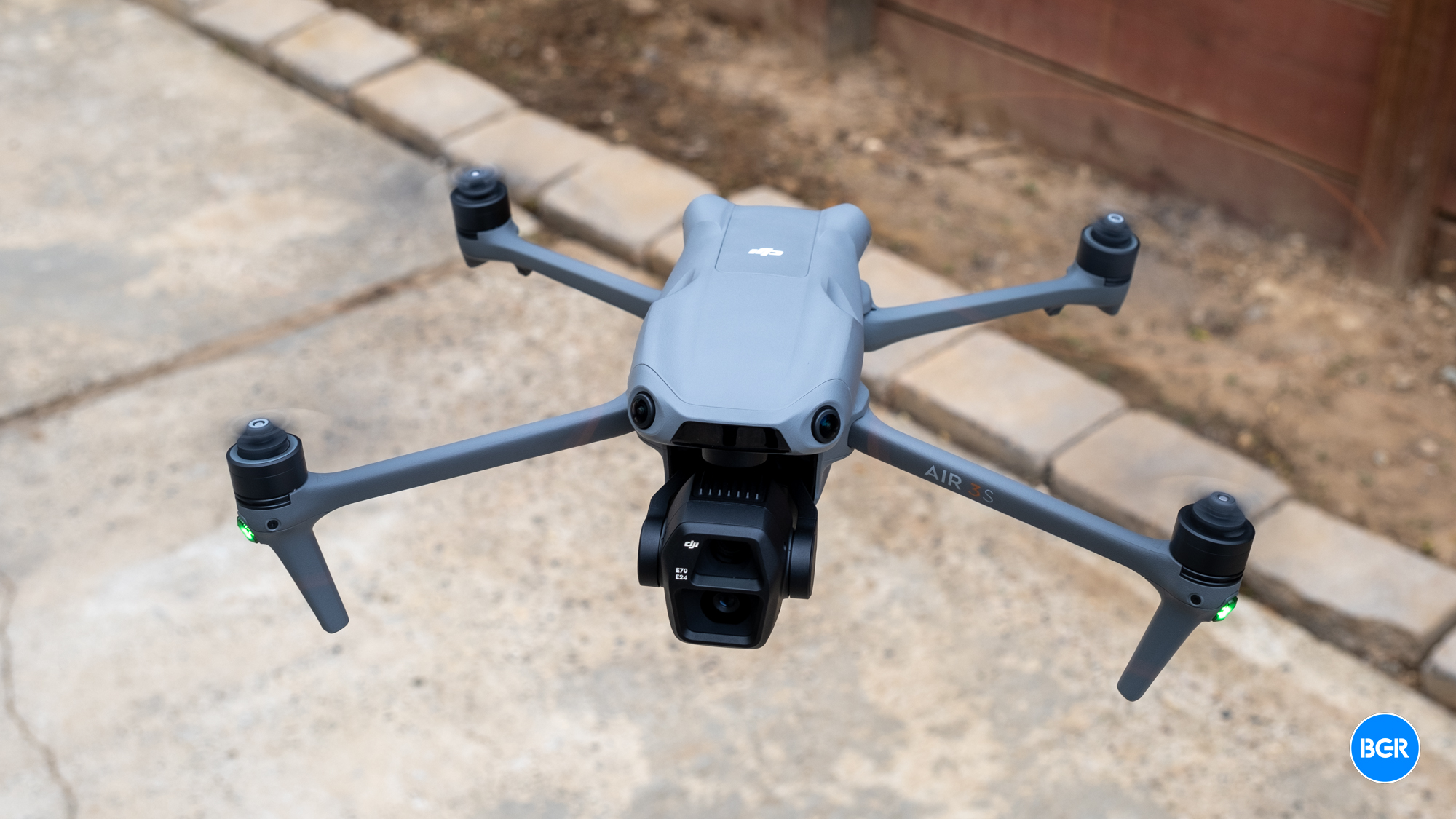
The battery life offered by the drone is pretty good. You get up to 45 minutes of flight time on a single charge, though in most situations you won't quite reach that unless you're flying in the most conservative modes. Still, 45 minutes is above average, and if you get the Fly More combo, you'll have three batteries in total, allowing you to fly for longer as long as you return home to replace the battery every so often.
Last but not least, the drone offers helpful modes for videographers looking to automate some of the capture process. There's a Waypoint Flight and Cruise Control mode that lets you set predetermined flight paths and camera actions, ensuring that you get the perfect shot. It can take a little time to set up the shot, but once you do, you'll find that it captures it pretty well.
An advanced dual-camera system
The camera system built into the DJI Air 3S is advanced and versatile, and I generally found it captured vibrant and detailed images and videos. In particular, the drone could capture 10-bit 4K video at up to 60 frames per second, or 120 frames per second if you enter slow-motion mode. Alternatively, you can shoot 1080p video at 240 frames per second. That's incredibly impressive, especially considering the fact that you're recording HDR footage.
The drone has two cameras built into it, one wide-angle camera that you use for most shots and one telephoto camera that offers 3x optical zoom or the equivalent of a 70mm lens. I found that regardless of which camera I was using, the stabilization on the drone was excellent, and I never experienced video that wasn't incredibly smooth.
The drone works well no matter what kind of creator you are. It can capture horizontal footage, which most videographers will probably make use of. But if you are creating for social media, you can also switch to a vertical mode that can shoot 2.7K footage at 60 frames per second. The camera itself doesn't rotate, so it's still capturing footage in the same way, but when it does so, it will draw a frame around the area that it's capturing in this mode so that you can get an idea of what the shot will look like.
On top of the basic capture modes that casual users can make use of, the drone can also capture DNG RAW photos that are more easily edited and 10-bit D-Log M footage that can be color-graded. This makes it excellent for aspiring videographers who still aren't willing to spend the cash necessary for DJI's much more advanced drones but have the skills necessary to edit after capture. I wouldn't necessarily say that I have those chops, but I did still enjoy editing shots in Adobe Lightroom, and love the added versatility.
Conclusions
The DJI Air 3S is the template for what a consumer drone should be. It's easy to fly, offers advanced features, and can capture excellent footage. Casual or recreational flyers should still consider the cheaper, yet still impressive, DJI Mini 4 Pro. But if you're looking for something a little more advanced and are willing to spend a little more cash, then the DJI Air 3S is the way to go.
The competition
Those considering the DJI Air 3S are likely also looking at the DJI Mini 4 Pro or coming from the previous generation DJI Air 3. If you have an Air 3, it's probably not quite worth upgrading. Air 3S has better omnidirectional sensing, especially in low light, and some new capture modes. But if you find that the obstacle avoidance on the Air 3 is already good enough, and you don't think you'll need those additional modes, stick with the DJI Air 3.
Compared to the DJI Mini 4 Pro, the Air 3S offers a better camera system, can fly faster, and has better battery life. That said, the Mini 4 Pro still has a versatile dual camera system and can capture 4K footage at 60 frames per second. Plus, it has a similar transmission distance. If you're a casual flyer and could stand to save some cash, the Mini 4 Pro is easily good enough. Plus, you won't have to register it with the FAA like you will with the DJI Air 3S.
Should I buy the DJI Air 3S?
Yes. It's an excellent drone and the way to go for anyone willing to spend the cash.
